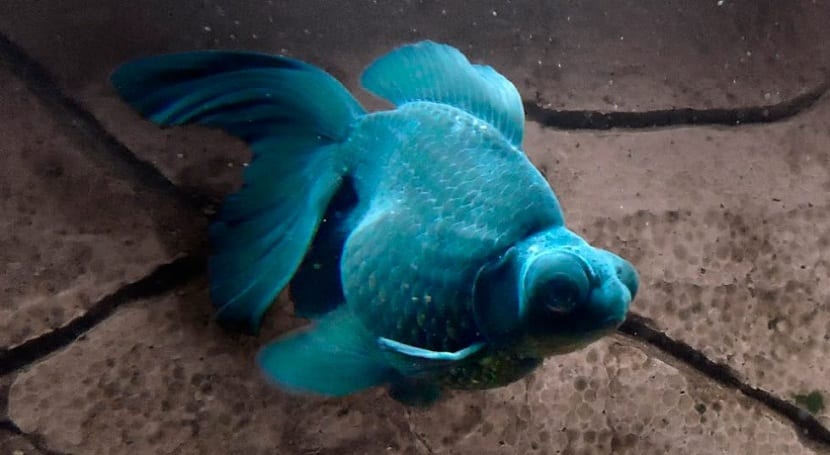
We have talked about the carp fish occasionally on this blog. Today we come to talk about a variety of golden carp: it is the Telescope Fish. Its main feature is the shape of its eyes. It is a species known for Demekin, Dragon Eyes, and Moor. Depending on where this fish is found, it is given a nickname and another.
It is one of the most popular fish in the world. Do you want to know more about the telescope fish?
Telescope fish characteristics
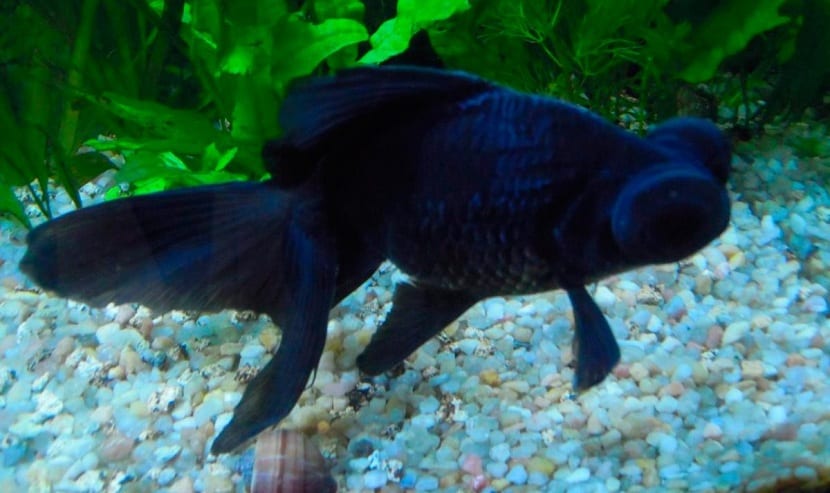
Within the characid family , there is a variety de peces, quite peculiar and curious, it has modified eyes called telescopes or Demekin. This variety originated in China at the beginning of the 18th century, and its main characteristic is its eyes, which seem to emerge from its head, that is, they protrude in such a way that they project outwards. However, although they acquire the name de peces telescope, its vision is very limited.
These fish are found in countless aquariums and fish tanks around the world. This fish has been domesticated by humans bred for ornamental purposes. Each time, over the years, the offspring have become more selective, giving the varieties that we have today.
The place where more varieties of this species are being created today is in Koriyama, a city in Japan.
It is a small fish, which at most reaches 30cm in length and a weight of one and a half kilograms, it has a life expectancy of about five to ten years.
The body has a rounded shape with smooth lines. They generally have the fins to match the dorsal and pectoral lines. It has a caudal fin with rounded tips that stand out thanks to their size.
The eyes of this fish are quite showy and are protected by a transparent cover. The more symmetrical the eyes of the fish are, the more expensive it will be, since it is given a higher value.
The fish does not have much vitality because does not have great ability to swim. At first, when they are younger, they usually have visual problems, but these become more severe over time. Some specialists indicate that the fish loses its visual capacity after two or three years of life in its entirety.
In terms of color, the telescope fish has a fairly intense coloration that extends even to the fins. Fish that have more intense tones have better quality. This has been achieved thanks to the fact that captive breeding is highly developed and has a great monochromatic variety with different color intensities. orange, yellow, white, red or black.
We also have other telescope specimens that have two colors. This is known as the panda coloring. When the fish are bicolor there is a great variety of color combinations. We can find the black eyes and fins and the white body (the best known as panda coloration and more abundant) and others such as red-white, red-black, yellow-black.
Some of these varieties are easier to find and some are not.
One of the peculiarities of telescope fish It is their low vitality, due in a certain way to their limited ability to swim and also to their visual limitation that becomes more acute with the passing of their years. Many specialists in the field affirm that after two or three years, these fish begin to suffer degenerative problems in their vision, which can end in total blindness in most cases.
Behavior
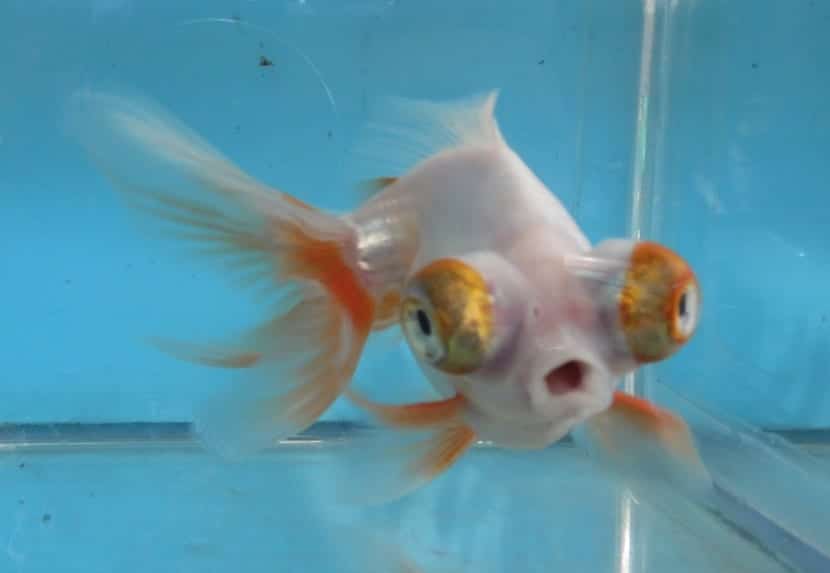
It is a gregarious fish and likes to be surrounded by other fish similar to it. They normally live in groups and are quite peaceful. As they are not very territorial, they do not usually attack other fish of their own breed or others.
It has a curious behavior that is based on the Continuous movement of the bottom stones, nibbling on the plants and pushing the aquarium decoration.
What you do have to take into account when adding a companion is not to place them with fry, since they end up eating it.
Food
This fish is omnivorous, so it will not give many problems in its diet. In addition, it is a fish that eats voraciously and therefore, it is necessary to control the variety of foods that it is given.
It can be fed live foods, such as brine shrimp, larvae, vegetables and green vegetables, with pellets or flakes, etc. These varied foods should be given several times a day and in small quantities. Although he is a voracious eater, he has very little stomach capacity, and he can suffer frequent stomach infections from poor diet.
If the diet is not good it can affect the swim bladder.
Reproduction

Telescope fish do not reach sexual maturity until a year or two after birth. Depending on the size you have achieved, it is easier or not to breed them in captivity. Courtship begins when the male begins to follow the female and continually pushes her against the plants in the aquarium. In this way the female releases her eggs.
Like the Angel fish, these fish are oviparous. Its eggs are sticky and yellow and it sticks to marine vegetation. The eggs hatch between 45 and 72 hours depending on the water temperature.
The fry feed on zooplankton. Depending on the variety, it takes a few weeks to give the characteristics their shape.
To increase the reproduction rate, some breeders use a manual spawning method that allows for good egg fertilization. This method can cause fish damage if not done correctly.
When spawning is complete, the adult fish can eat the eggs that remain attached to the plants. For this reason, it is sometimes necessary to separate the fish from their eggs. The female is capable of putting between 300 and 2000 eggs at a time.
Types of telescope fish
Black telescope fish
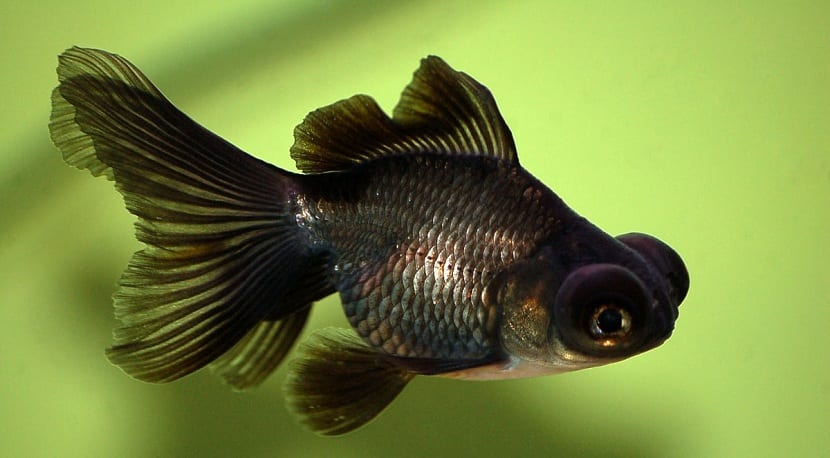
Most of these fish have deep, long and graceful bodies. Their eyes are quite showy and can reach up to 15 cm in length. Su life expectancy is between 6 and 25 years.
Most of these fish do not maintain the black color throughout their lives, but instead change the color of the belly. These fish are most famous for being hardy and easy to care for.
Panda telescope fish
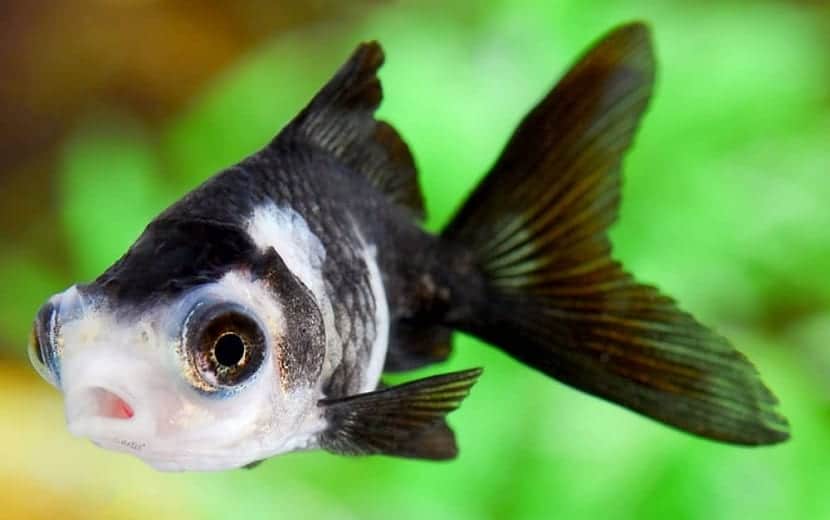
The eyes are outstanding and develop gradually with age. With age it can lose its coloration and turn into orange and white or another combination of colors.
They are strictly cold water fish.
Aquarium features
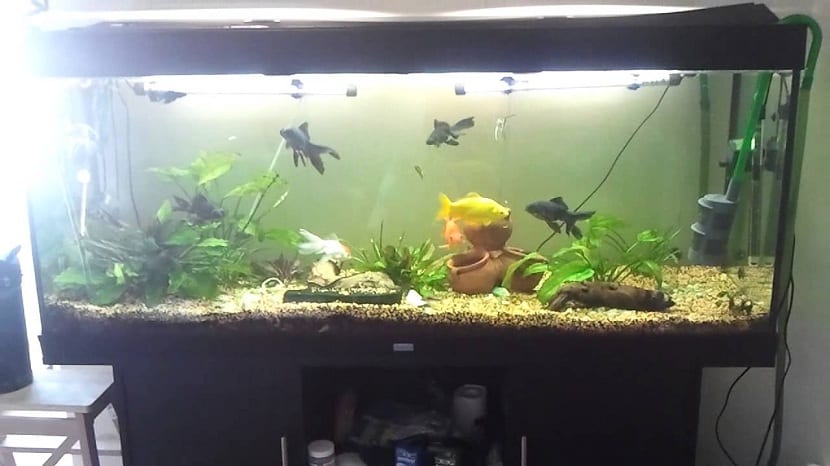
These fish require a fairly large aquarium (exceeding 70 liters of water) to have at least three copies. They are sensitive to sudden changes in water temperature and do not tolerate low temperatures well
It is recommended that you do not use round urns, as they seriously compromise the gas exchange. Similarly, the water temperature should be between 18 and 23 degrees Celsius, while its pH should be 7 and 7,5.
When the aquarium begins to filter, do not create disturbances in the water currents that hinder its movement, as we remember that their swimming abilities are low.
It is recommended that the aquarium have natural plants and should be placed in a dark place, since these fish are sensitive to light. If they stay in the light for a long time, they are capable of developing fungi.
The water temperature should be between 10 and 24 gados. They need good oxygenation and do not exceed these temperatures or they will die. To better oxygenate the aquarium, a bubble diffuser should be placed.
Compatibility
You should not place them with other fish that swim very fast because they can hurt you and collide and steal their food.
Ideal companions are the corydoras.
Diseases and prices
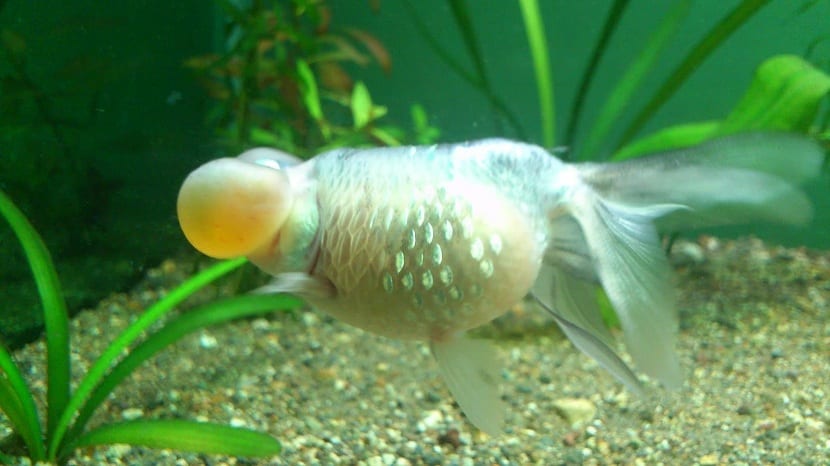
If the aquarium is kept in ideal conditions it is easy to prevent diseases, but some diseases can still appear.
When a fish is affected it is much better to move it to a separate aquarium and treat it as soon as possible.
You can have diseases like the dropsy (kidney disease), tuberculosis de peces (the fish develops a hollow belly and may present symptoms such as lethargy, deformities or missing fins), tail breakage and fin rotation caused by a bacterial infection, etc.
The price of these fish is around between € 2,90 and € 5 depending on the type.
With this information you can keep your telescope fish well.
I bought one two months ago, but when I threw food at it, it wouldn't eat. I separated him a little so that he could eat because the others could eat before. But nothing. A few days ago he died and I don't know why
Hello, I want to have 1 goggle-eyed pes, but I only want one pes, how many liters does the pessary have to be? GRASIAH
try to put the eye, gently and put a few drops of amoxyxilin